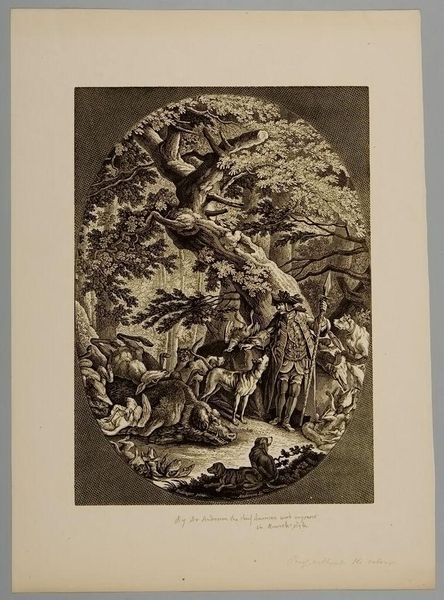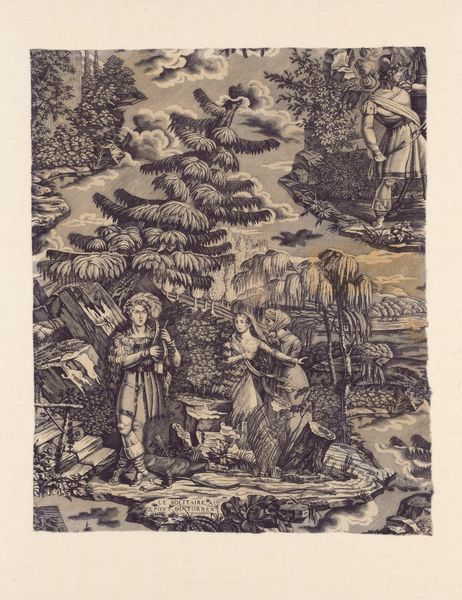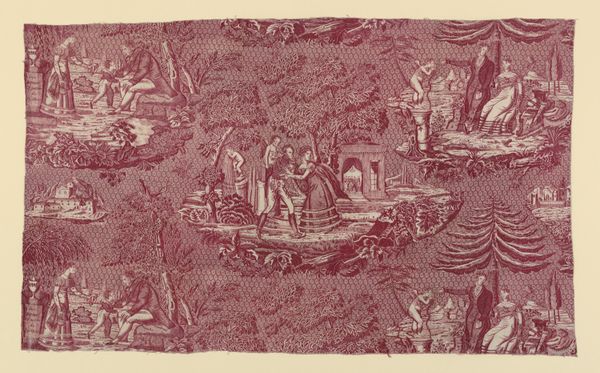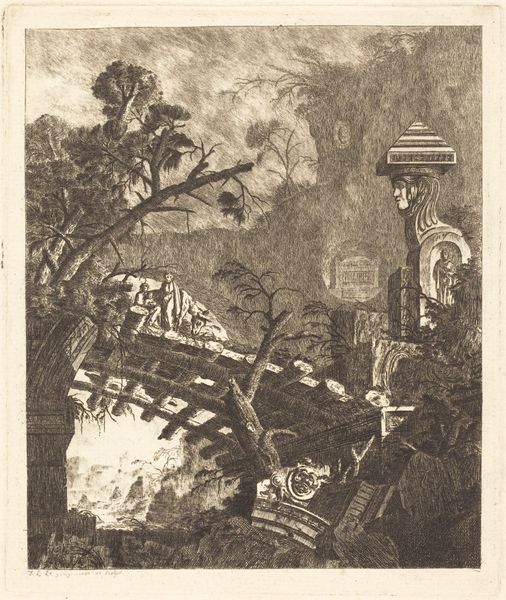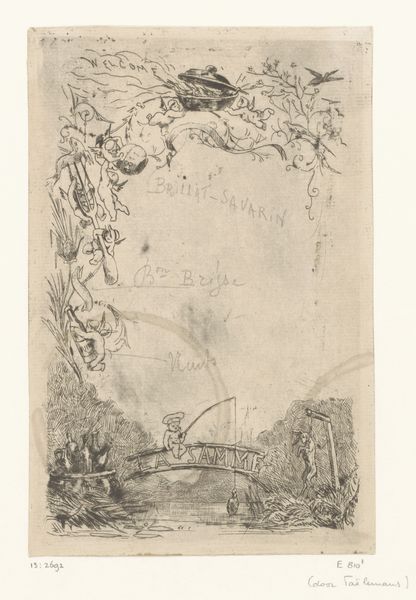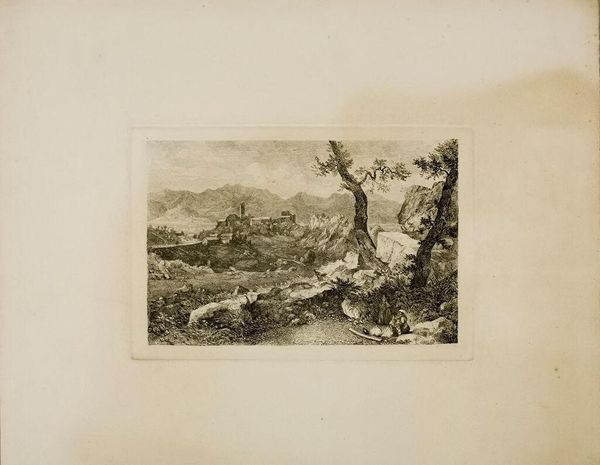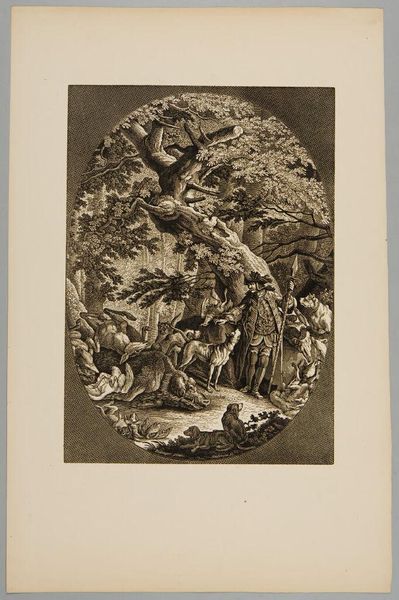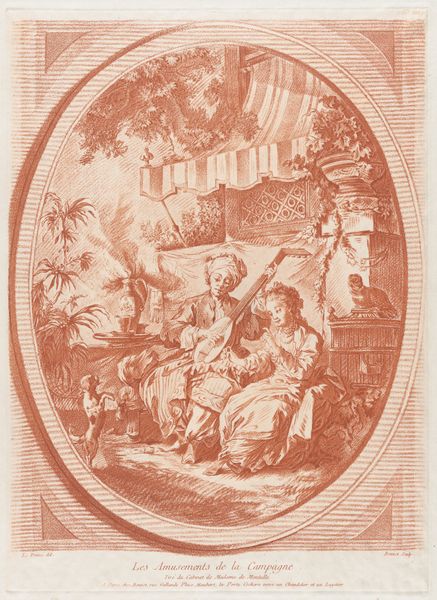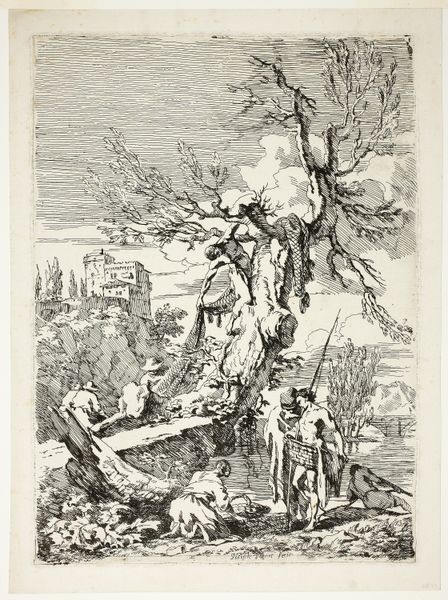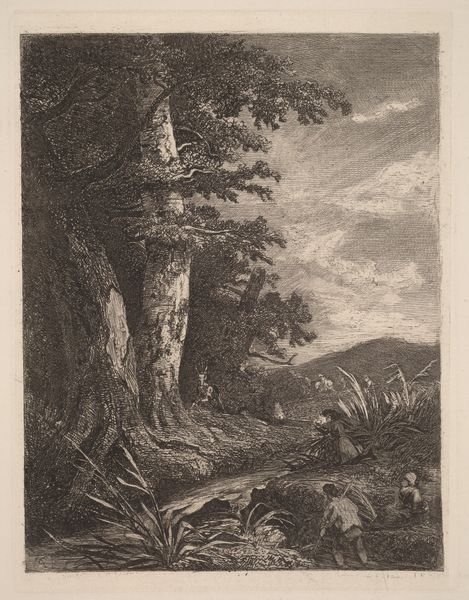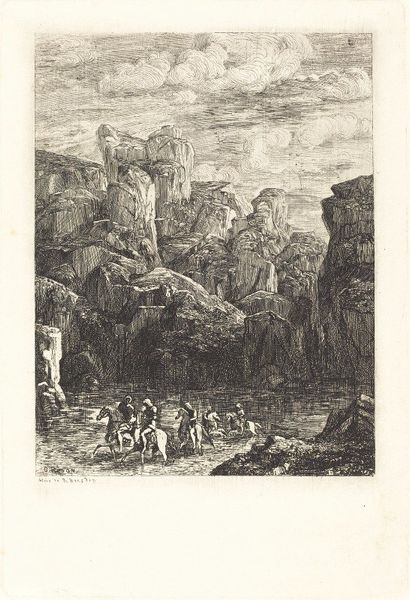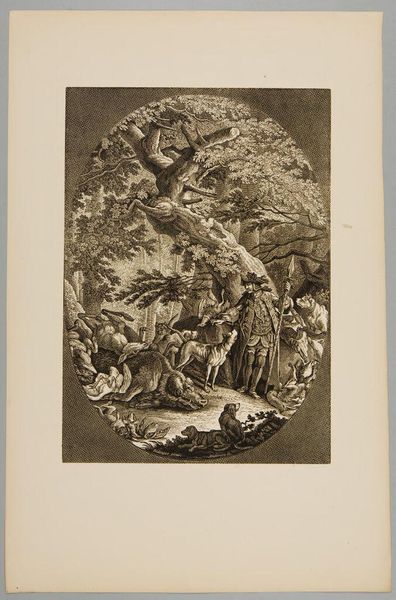
La Vie de Jeanne d'Arc (The Life of Joan of Arc) (Furnishing Fabric) c. 1815
0:00
0:00
print, weaving, textile
# print
#
weaving
#
textile
#
romanticism
#
france
#
history-painting
Dimensions: 60.3 × 38.1 cm (23 3/4 × 15 in.)
Copyright: Public Domain
Curator: This furnishing fabric, entitled "La Vie de Jeanne d'Arc," or "The Life of Joan of Arc," was created around 1815 by Charles Abraham Chasselat. It's quite fascinating, showcasing scenes from Joan's life woven together on this single textile. Editor: The visual impact is rather muted at first glance, isn't it? Sepia tones dominate, and the scenes blend in a somewhat chaotic arrangement. There's a strong Romanticism aesthetic here. Curator: Indeed. The monochromatic scheme and the textile medium suggest a domestic, even intimate setting for viewing these grand historical moments. Think about where such a textile would be placed—perhaps on walls, chairs, or even used as a bed covering. The history is literally embedded in the domestic sphere. Editor: I'm drawn to the implications of framing Joan's life in this way. Consider, this textile was made not long after the Revolution, a period of upheaval. How do you interpret this particular medium influencing how we should understand this visual depiction of the life and narrative surrounding Joan? Curator: Well, it’s significant to consider that textiles possess unique historical ties to women's labor and creativity. To me, this is evidence that situating Joan’s story within this medium serves to reclaim and recognize her as a revolutionary symbol for not only France but all women. Editor: You raise a good point. Furthermore, this piece reflects how Romanticism turned towards history and legend in the search for national identity and moral exemplars. Joan was, and continues to be, utilized as a symbol that is uniquely French. I see so many references to her these days in response to gendered inequalities. It appears her martyrdom still offers great power. Curator: Exactly, the act of surrounding oneself with images of Joan within the home might have been a way to express a yearning for national pride and traditional values but simultaneously speaks to more complex questions around agency and feminine power. Editor: Thank you for unpacking that! Overall, seeing this historical figure interpreted across these multiple scenes and contextualized as furnishing fabric offers valuable insights. Curator: Yes, indeed. Reflecting on the political and social contexts allows for a deeper appreciation of the artwork’s message and purpose.
Comments
No comments
Be the first to comment and join the conversation on the ultimate creative platform.

